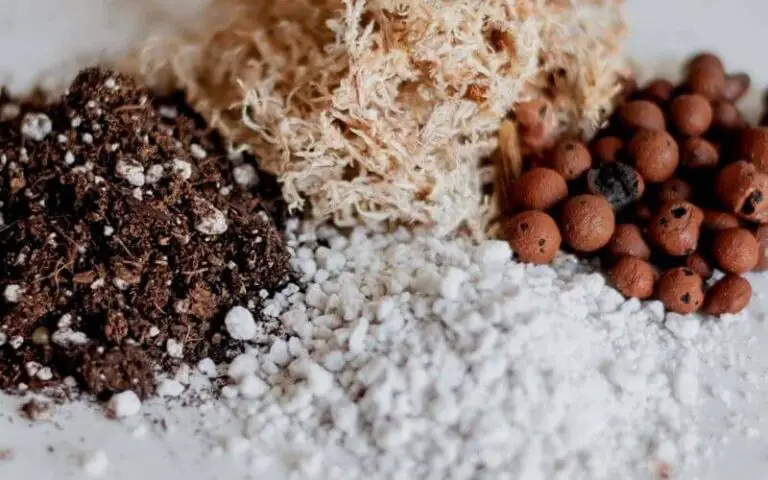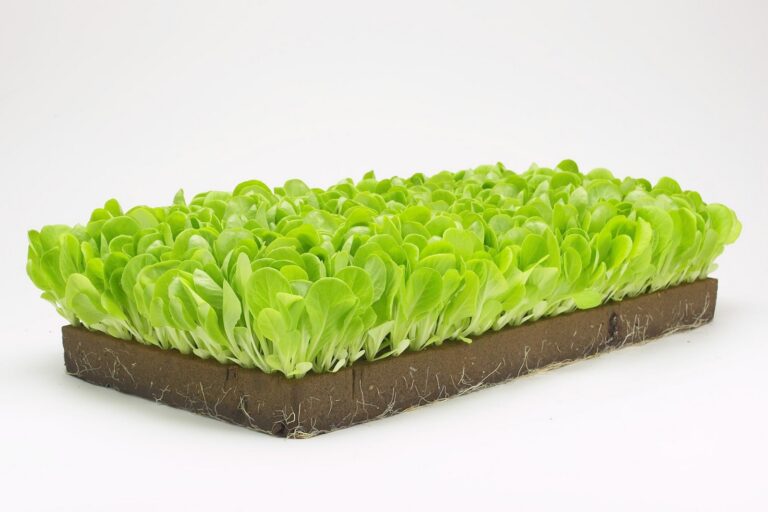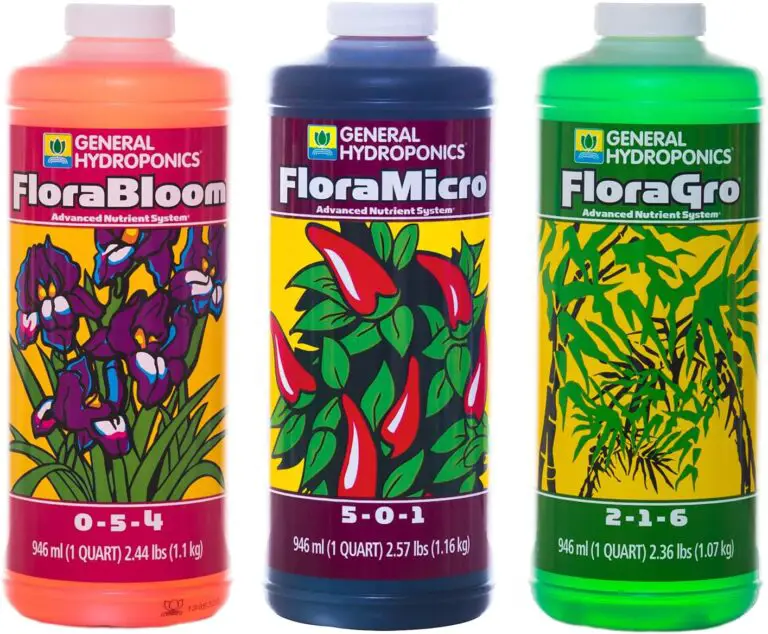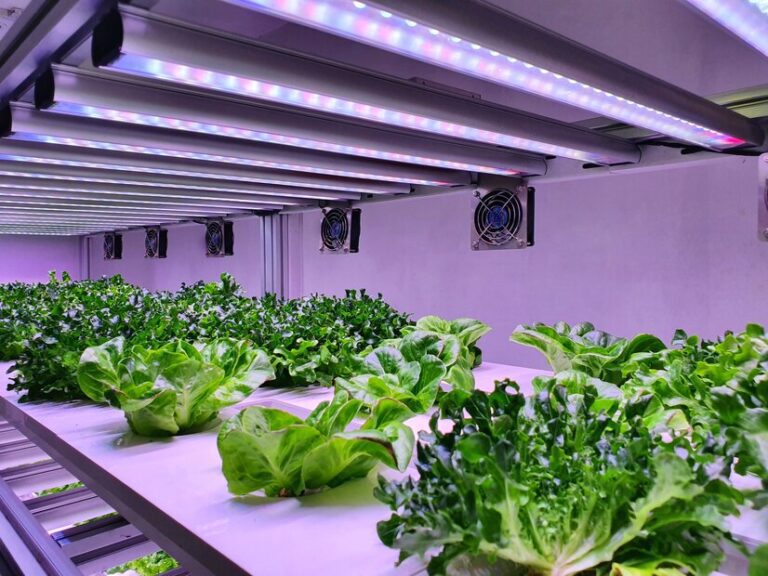The Power of Rice Hulls in Hydroponics: 10 Reasons to Use Them
Table of Contents
The Benefits of Incorporating Rice Hulls in Hydroponics
Rice hulls are a valuable addition to hydroponics systems, offering numerous benefits to gardeners and growers. One of the key advantages of incorporating rice hulls in hydroponics is their ability to enhance nutrient absorption. The porous structure of rice hulls provides an ideal environment for beneficial bacteria and fungi to thrive, increasing the availability and uptake of essential nutrients by the plants. Studies have shown that the inclusion of rice hulls in hydroponic systems can lead to improved nutrient utilization and overall plant health.
In addition to nutrient absorption, rice hulls also contribute to improving soil structure and aeration in hydroponics. The lightweight and fibrous nature of rice hulls create air pockets within the growing medium, promoting better oxygen circulation to the roots. This is crucial for root growth and development, as it prevents the roots from becoming waterlogged and suffocated. Furthermore, the presence of rice hulls in the growing medium enhances soil structure, allowing for better water drainage and preventing compaction. This not only fosters healthier root systems but also minimizes the risk of disease and root rot caused by excessive moisture.

Enhancing Nutrient Absorption with Rice Hulls in Hydroponics
Hydroponics, a method of growing plants without soil, offers numerous benefits for gardeners, including increased control over nutrient absorption. One way to enhance nutrient absorption in hydroponics is by incorporating rice hulls into the growing medium. Rice hulls, the protective outer layer of rice grains, have been proven to improve the efficiency of nutrient uptake by plants.
Rice hulls contain silica, a compound that has been shown to enhance nutrient absorption in plants. Silica acts as a natural barrier, protecting plants from various stresses such as nutrient imbalances, disease, and pest infestations. When rice hulls are added to the hydroponic system, they release silica into the nutrient solution, which is then absorbed by the plants. This silica helps strengthen the plants’ cell walls, making them more resilient and efficient in absorbing essential nutrients.
Moreover, rice hulls also provide a physical benefit to the hydroponic system. They improve the structure and aeration of the growing medium, allowing for better water and nutrient distribution. The porous nature of rice hulls promotes healthy root development by providing optimal oxygenation and preventing root rot. This creates an ideal environment for roots to explore the growing medium and absorb nutrients efficiently.

Incorporating rice hulls into hydroponics not only enhances nutrient absorption but also improves overall plant health and performance. By harnessing the power of rice hulls, gardeners can optimize their hydroponic systems and achieve impressive results in crop yield and quality. But the benefits of rice hulls in hydroponics don’t stop there; they also play a crucial role in maintaining pH balance, reducing watering frequency, preventing disease and pest infestations, and contributing to environmental sustainability. Next, let’s explore these aspects in greater detail.
Improving Soil Structure and Aeration in Hydroponics using Rice Hulls
Rice hulls have proven to be a valuable addition to hydroponics systems, particularly when it comes to improving soil structure and aeration. The use of rice hulls can significantly enhance the physical properties of the growing medium, allowing for better root development and nutrient absorption.
One of the key advantages of incorporating rice hulls in hydroponics is their ability to create a well-drained and aerated environment for plant roots. The hulls have a naturally porous structure, which allows for increased oxygenation of the root zone. This improved aeration is essential for healthy root growth and function, as it facilitates the uptake of nutrients and water by the roots.
In addition to promoting aeration, rice hulls also contribute to the overall soil structure in hydroponics systems. The lightweight and fibrous nature of rice hulls help to create a loose and friable growing medium, preventing compaction and ensuring proper drainage. This structural improvement allows for better water and nutrient retention, reducing the risk of waterlogging and nutrient imbalances.
By incorporating rice hulls into hydroponics systems, gardeners can create an optimal growing environment that promotes healthy root development and nutrient absorption. The improved soil structure and aeration provided by rice hulls contribute to the overall success of hydroponic gardening, allowing for increased crop yields and enhanced plant growth.
• Rice hulls enhance the physical properties of the growing medium
• Improved aeration promotes healthy root growth and nutrient absorption
• Rice hulls contribute to overall soil structure in hydroponics systems
• Prevents compaction and ensures proper drainage
• Better water and nutrient retention reduces risk of waterlogging and imbalances
• Optimal growing environment leads to increased crop yields and enhanced plant growth
How Rice Hulls Promote Healthy Root Development in Hydroponics Systems
Rice hulls have been widely recognized for their ability to promote healthy root development in hydroponics systems. As a highly porous material, rice hulls offer a range of benefits that contribute to the overall growth and vitality of plants.
First and foremost, the porous nature of rice hulls allows for excellent air circulation within the hydroponic medium. This means that oxygen can easily reach the roots, ensuring the necessary supply for respiration and promoting efficient nutrient uptake. By maintaining a well-aerated root zone, rice hulls help prevent issues such as root rot and anaerobic conditions that can impede healthy root growth.
Additionally, rice hulls provide ample space for root expansion and exploration. The loose structure of the hulls allows roots to penetrate and grow throughout the medium, resulting in a stronger and more robust root system. This increased root mass enables plants to absorb nutrients more effectively, resulting in improved overall plant health and a greater capacity for nutrient uptake.

In conclusion, incorporating rice hulls into hydroponics systems can greatly enhance healthy root development. From providing excellent air circulation to facilitating root expansion, rice hulls offer a range of benefits that contribute to optimal plant growth. Whether you are an experienced hydroponics enthusiast or just starting out, consider incorporating rice hulls into your system to promote the healthy development of roots and maximize the potential of your plants.
The Role of Rice Hulls in Maintaining pH Balance in Hydroponics
Rice hulls play a crucial role in maintaining pH balance in hydroponics systems. pH refers to the measure of acidity or alkalinity of a solution and is an essential factor to consider in hydroponic gardening. Most plants thrive within a specific pH range, and any deviation can result in nutrient deficiencies or toxicities, ultimately affecting plant health and growth.
The incorporation of rice hulls helps maintain pH stability in hydroponic systems by acting as a natural buffer. As organic materials decompose, they release compounds known as organic acids. These organic acids found in rice hulls, such as humic and fulvic acids, have the ability to neutralize alkaline or acidic substances, thereby keeping the pH within the optimal range for plant uptake of nutrients. By using rice hulls as a growing medium or adding them to the existing medium, hydroponic gardeners can ensure a more stable and balanced pH environment for their plants.

In addition to their pH buffering properties, rice hulls also have a high cation exchange capacity (CEC). CEC refers to the ability of a medium to absorb and hold onto positively charged ions, such as essential plant nutrients like calcium, potassium, and magnesium. The high CEC of rice hulls allows them to capture and release these nutrients as needed, helping to maintain proper nutrient balance in the hydroponic system. This ensures that the plants have a steady supply of essential nutrients, promoting healthy growth and development.
Overall, the role of rice hulls in maintaining pH balance in hydroponics is crucial for the success of any hydroponic garden. By providing a natural buffer and optimizing nutrient availability, rice hulls help create an optimal environment for plant growth and increase the likelihood of achieving higher yields and healthier plants. Their use not only benefits the plants but also provides a sustainable and eco-friendly alternative to traditional hydroponic mediums.
Increasing Water Retention and Reducing Watering Frequency with Rice Hulls in Hydroponics
Rice hulls offer a valuable solution for increasing water retention and reducing the frequency of watering in hydroponics systems. One of the key advantages of incorporating rice hulls into hydroponic setups is their ability to absorb and hold moisture. This natural characteristic helps to create an optimal environment for plant growth, as it allows the roots to access water as needed.
By using rice hulls as a growing medium, gardeners can benefit from a more efficient water management system. The hulls have a high water holding capacity, meaning they can absorb and retain moisture for an extended period of time. This, in turn, reduces the need for frequent watering and helps to conserve water resources. Additionally, the ability of rice hulls to hold moisture helps to create a more stable moisture level within the hydroponic system, providing a consistent water supply for the plants. Overall, incorporating rice hulls into hydroponics allows for better water retention and reduces the overall watering frequency, providing a more sustainable and efficient approach to plant cultivation.
The Environmental Advantages of Using Rice Hulls in Hydroponics
Rice hulls have gained widespread recognition as an environmentally advantageous choice for hydroponic systems. Their use offers a range of benefits that not only promote sustainable gardening practices but also contribute to the overall health of the planet. One of the most notable environmental advantages of using rice hulls in hydroponics is their ability to reduce waste. Rice hulls are a byproduct of the rice milling process, and by incorporating them into hydroponic systems, we can repurpose what would otherwise be discarded as agricultural waste. This not only helps to divert these hulls from landfills but also reduces the carbon footprint associated with rice production.
Furthermore, the use of rice hulls in hydroponics helps to conserve water, an increasingly valuable and scarce resource. Rice hulls have excellent water retention properties, allowing them to hold moisture within the growing medium. This reduces the need for frequent watering, resulting in significant water savings over time. In a world where water shortages are becoming more prevalent, this eco-friendly solution aligns with sustainable water management practices.
| Environmental Advantages | Description |
|---|---|
| Renewable Resource | Rice hulls are a byproduct of rice milling, making them a readily available and renewable resource. Using them in hydroponics helps repurpose waste. |
| Biodegradable | Rice hulls are organic and biodegradable, contributing to sustainable practices. They break down naturally over time, reducing environmental impact. |
| Reduced Waste | Incorporating rice hulls into hydroponic systems provides a beneficial use for a waste product that might otherwise be disposed of, helping to minimize overall waste. |
| Lower Carbon Footprint | Compared to some alternative growing media, the production and transportation of rice hulls typically result in a lower carbon footprint, promoting eco-friendly practices. |
| Improved Water Retention | Rice hulls help retain moisture in the growing medium, reducing the need for excessive water use. This promotes water conservation, a critical aspect of sustainable agriculture. |
| Enhanced Aeration | The structure of rice hulls allows for improved aeration of the root zone, promoting healthier plant growth. This can lead to more efficient nutrient uptake and overall productivity. |
Additionally, rice hulls contribute to the reduction of synthetic fertilizers and pesticides in hydroponic systems. As a natural source of silicon, rice hulls have been shown to enhance plant resistance against diseases and pests. This promotes a healthier growing environment and reduces the reliance on harmful chemicals that can have detrimental effects on ecosystems. By incorporating rice hulls into hydroponic setups, gardeners can create a more balanced and sustainable system that supports plant growth while minimizing the negative impact on the environment.
The environmental advantages of using rice hulls in hydroponics are significant and cannot be overlooked. From waste reduction to water conservation and pesticide reduction, incorporating rice hulls into hydroponic systems offers both immediate benefits and long-term sustainability. As the demand for ecologically responsible gardening practices continues to grow, rice hulls emerge as a valuable resource in achieving these goals. By harnessing their potential, we can cultivate healthy and thriving plants while treading lightly on our planet.
Preventing Disease and Pest Infestations with Rice Hulls in Hydroponics
Rice hulls play a vital role in preventing disease and pest infestations in hydroponic systems. One of the primary benefits of incorporating rice hulls as a growing medium is their ability to create a physical barrier against invasive pathogens and pests. The outer layer of rice hulls contains silica, which acts as a protective shield for the roots of plants, making them less susceptible to disease-causing organisms.
Furthermore, rice hulls have been found to deter common pests in hydroponic setups. Their rough texture and slightly abrasive nature make it difficult for insects like aphids and thrips to navigate, reducing the risk of infestations. Additionally, rice hulls do not provide an ideal environment for the larvae of many pests, further discouraging their presence in the hydroponic system.
Incorporating rice hulls into hydroponics not only promotes disease and pest resistance, but it also aligns with sustainable gardening practices. By avoiding the use of chemical pesticides, hydroponic growers can create a more environmentally friendly growing environment. With these benefits in mind, hydroponic enthusiasts can confidently utilize rice hulls as a strategy to prevent diseases and pests in their hydroponic systems, allowing for healthy and thriving crops.
Rice Hulls: A Sustainable Alternative to Traditional Hydroponic Growing Media
Rice hulls offer a sustainable and environmentally friendly alternative to traditional hydroponic growing media. As a byproduct of rice processing, rice hulls are readily available and easily accessible, making them an ideal choice for hydroponic gardeners looking for a sustainable solution.
In addition to their sustainable nature, rice hulls also provide several benefits for hydroponic systems. Firstly, their high silica content enhances root development and strengthens plant cell walls, leading to healthier and more resilient plants. This is particularly important in hydroponics, where plants lack the support of traditional soil.
Furthermore, rice hulls improve soil structure and aeration in hydroponic systems. As they break down slowly over time, they create air pockets within the growing medium, allowing for better oxygen flow to the plant roots. This improved aeration promotes healthy root growth and reduces the risk of root rot or other water-related issues. Additionally, the fibrous nature of rice hulls helps to prevent the compacting of the growing medium, ensuring optimal water drainage and nutrient absorption.
Overall, the use of rice hulls as a sustainable alternative to traditional hydroponic growing media is a smart choice for both the environment and the health of your plants. With their abundance and numerous benefits, rice hulls provide an excellent option for hydroponic gardeners looking to maximize their yields while minimizing their ecological impact.
| Aspect | Rice Hulls as Hydroponic Growing Media |
|---|---|
| Material | Rice Hulls (outer layer of rice grain) |
| Sustainability | Renewable and abundant agricultural byproduct |
| Physical Properties | Lightweight, porous, and well-draining |
| Aeration | Provides excellent aeration to the root system |
| Water Retention | Maintains adequate moisture without waterlogging |
| pH Stability | Nearly neutral pH, reducing the need for adjustments |
| Nutrient Retention | Low nutrient-holding capacity; requires regular nutrient supplementation |
| Degradability | Biodegradable and breaks down over time, reducing waste |
| Cost-Effective | Economical compared to some traditional growing media |
| Suitable Crops | Ideal for various hydroponic crops, especially those preferring well-aerated roots |
| Environmental Impact | Low carbon footprint, contributes to waste reduction |
Enhancing Crop Yield and Quality with Rice Hulls in Hydroponics
In hydroponics, the use of rice hulls can greatly enhance crop yield and quality. Rice hulls are an organic, sustainable, and cost-effective solution for hydroponic growers looking to maximize their harvests. One of the key benefits of incorporating rice hulls in hydroponics is their ability to improve soil structure and aeration.
By adding rice hulls to the growing medium, it creates a more open and porous environment, allowing for better oxygenation of the roots. This increased oxygen supply to the plants’ roots promotes healthy root development, which in turn enhances nutrient uptake and overall plant growth. Additionally, the improved soil structure provided by rice hulls allows for better water drainage, preventing waterlogged conditions that can lead to root rot and other plant diseases.
Moreover, rice hulls can help maintain pH balance in hydroponics systems. They have a naturally neutral pH that can act as a buffer, preventing drastic fluctuations in acidity or alkalinity. This stability is crucial for optimal nutrient uptake by the plants, as different nutrients are absorbed at different pH levels. By using rice hulls, growers can ensure that their plants have a consistent pH environment, which promotes efficient nutrient absorption.
In conclusion, incorporating rice hulls in hydroponics can have a significant impact on crop yield and quality. The improved soil structure and aeration provided by rice hulls promote healthy root development, enhance nutrient uptake, and prevent waterlogged conditions. Additionally, their ability to maintain pH balance ensures optimal nutrient absorption by the plants. By harnessing the benefits of rice hulls, hydroponic growers can achieve higher yields and superior crop quality.
Rice Hulls as a Cost-Effective Solution for Hydroponic Growers
Rice hulls have emerged as a cost-effective solution for hydroponic growers, providing numerous benefits for both the plants and their wallets. Incorporating rice hulls into hydroponic systems can significantly reduce the overall cost of growing, making it an appealing option for growers of all scales.
One of the primary advantages of using rice hulls is their affordability and accessibility. Unlike other growing media, such as coconut coir or rockwool, rice hulls are widely available and can be obtained at a fraction of the cost. This makes them an attractive option, particularly for small-scale or hobbyist growers who may be operating on a limited budget.
Furthermore, rice hulls offer excellent water retention properties, reducing the frequency of watering required in hydroponic systems. This not only saves growers valuable time and effort but also reduces water consumption, making it an environmentally-friendly choice. Additionally, rice hulls provide good aeration to the root zone, promoting healthy root development and preventing issues such as root rot. These factors contribute to overall plant health and vigor, ultimately leading to better crop yield and quality.
In conclusion, the utilization of rice hulls in hydroponic systems can provide hydroponic growers with a cost-effective solution that offers various advantages. From their affordability and accessibility to their ability to enhance water retention and promote root development, rice hulls prove to be a valuable addition to hydroponic setups. By incorporating rice hulls, growers can optimize their growing operations while minimizing costs, making it an option worth considering for all hydroponic enthusiasts.
The Role of Rice Hulls in Promoting Plant Growth and Development in Hydroponics
Rice hulls, often viewed as a waste product in the rice industry, have proven to be an invaluable resource in promoting plant growth and development in hydroponics systems. These lightweight and porous hulls provide numerous benefits that contribute to the overall success of hydroponic gardening.
First and foremost, rice hulls improve the physical structure and aeration of the growing medium. Due to their porous nature, they allow for better air circulation and water drainage, preventing the accumulation of excess moisture that can lead to root rot and other diseases. This enhanced aeration also creates a favorable environment for root development, allowing plants to establish a strong and healthy root system. Additionally, the presence of rice hulls in the growing medium helps to prevent compaction, ensuring that roots have ample space to grow and access vital nutrients.
Furthermore, rice hulls act as a natural buffer to maintain appropriate pH levels in hydroponics systems. They have a neutral pH, which helps to counterbalance any fluctuations that may occur in the nutrient solution. This is particularly important as the pH of the growing medium directly affects nutrient availability and uptake by plants. By providing stability in pH levels, rice hulls support optimal nutrient absorption and utilization, ultimately promoting healthy plant growth.
In the next sections of this article, we will delve deeper into the specific ways in which rice hulls contribute to enhanced nutrient absorption, improved water retention, disease prevention, and more. Stay tuned to uncover the full potential of rice hulls in hydroponic gardening and learn how to harness their benefits for your own flourishing plants.
How Rice Hulls Can Improve Nutrient Uptake Efficiency in Hydroponics
Rice hulls have gained popularity in hydroponics due to their ability to improve nutrient uptake efficiency. The unique properties of rice hulls make them an excellent addition to hydroponic systems, providing numerous benefits for plant growth and development.
One key advantage of rice hulls in hydroponics is their ability to enhance the nutrient absorption process. The hulls have a high surface area-to-volume ratio, which promotes better contact between the nutrient solution and the plant roots. This increased surface area allows for more efficient nutrient absorption, ensuring that the plants receive the essential elements they need for optimal growth.
In addition, rice hulls act as a natural filter, helping to prevent nutrient build-up and potential nutrient imbalances in the hydroponic system. They aid in maintaining a stable nutrient solution by absorbing excess nutrients and releasing them back to the plants as needed. This process not only improves nutrient uptake efficiency but also helps to maintain proper pH levels in the system, creating an ideal environment for plant growth.
By incorporating rice hulls into hydroponics, gardeners can maximize the nutrient uptake efficiency of their plants, resulting in healthier and more productive crops. The use of rice hulls as a growing medium in hydroponics not only provides these benefits but also offers a sustainable and environmentally friendly alternative to traditional growing media.
Rice Hulls: A Natural Weed Suppressant in Hydroponic Systems
Rice hulls have long been recognized for their numerous benefits in hydroponic systems, including their ability to naturally suppress weeds. Weeds are not only unsightly, but they can also compete with your crops for essential nutrients, water, and space, hindering their growth and development. By incorporating rice hulls into your hydroponic system, you can effectively control weed growth and maintain a clean and healthy environment for your plants.
One of the reasons why rice hulls act as a natural weed suppressant is their physical properties. Rice hulls form a protective layer on the surface of the growing media, creating a barrier that inhibits the germination and growth of weed seeds. This layer also helps to prevent weed seeds from being exposed to light, which is essential for their germination process. Additionally, rice hulls provide a loose and airy texture to the growing media, making it more difficult for weeds to establish themselves.
Furthermore, rice hulls offer a sustainable and environmentally friendly solution to weed control in hydroponic systems. Unlike synthetic herbicides, rice hulls are a natural and biodegradable material that poses no harm to the environment or your plants. They are readily available, inexpensive, and easy to use, making them a practical choice for both commercial growers and home gardeners.
Incorporating rice hulls in your hydroponic system not only helps to suppress weeds, but also provides other advantages such as enhanced nutrient absorption, improved soil structure, and increased water retention. With their wide range of benefits, rice hulls are truly a valuable addition to any hydroponic setup. (Note: continuation of article is required)
The Versatility of Rice Hulls in Various Hydroponic Systems
Rice hulls have emerged as a versatile and valuable resource in various hydroponic systems. With their unique properties and multiple benefits, they have proven to be an excellent addition to the world of hydroponics.
One of the key advantages of incorporating rice hulls in hydroponics is their ability to enhance soil structure and aeration. As hydroponics relies on a soilless growing medium, it is crucial to provide an environment that promotes optimal root development and nutrient absorption. Rice hulls, with their high porosity and lightweight nature, aid in improving soil structure, allowing for better water drainage and air circulation. This, in turn, prevents the roots from being waterlogged and facilitates the exchange of gases, creating an environment conducive to healthy plant growth.
Additionally, rice hulls have been found to act as an effective pH buffer in hydroponic systems. Maintaining the proper pH balance is vital for nutrient availability and uptake by plants. Rice hulls, being slightly acidic, can help regulate pH levels by counteracting alkaline substances. By incorporating rice hulls into hydroponic setups, growers can ensure that their plants receive the ideal pH conditions, resulting in improved nutrient absorption and overall plant health.
The versatility of rice hulls extends beyond these benefits, demonstrating their potential to contribute to various aspects of hydroponic gardening. From enhancing nutrient absorption and promoting healthy root development to reducing watering frequency and preventing disease infestations, rice hulls have proven to be a sustainable and cost-effective solution for hydroponic growers. As we delve further into the benefits and applications of rice hulls in hydroponics, it becomes clear that their versatility in various aspects of hydroponic gardening makes them a valuable addition to any hydroponic system.
What are rice hulls?
Rice hulls are the protective outer layer of rice grains, also known as the husk, which is removed during the milling process.
How are rice hulls beneficial in hydroponics?
Rice hulls offer numerous benefits in hydroponics, such as enhancing nutrient absorption, improving soil structure and aeration, promoting healthy root development, maintaining pH balance, increasing water retention, preventing disease and pest infestations, and suppressing weed growth.
Can rice hulls be used as a sustainable alternative to traditional hydroponic growing media?
Yes, rice hulls can be considered a sustainable alternative to traditional hydroponic growing media due to their availability, affordability, and biodegradability.
Do rice hulls improve crop yield and quality in hydroponics?
Yes, incorporating rice hulls in hydroponics can enhance crop yield and quality by providing a favorable environment for plant growth and development.
How do rice hulls improve nutrient uptake efficiency in hydroponics?
Rice hulls act as a medium that helps retain and release nutrients gradually, ensuring optimal nutrient availability to plants and improving nutrient uptake efficiency in hydroponic systems.
Can rice hulls suppress weed growth in hydroponic systems?
Yes, rice hulls have natural weed suppressant properties, which can help prevent weed growth and competition for nutrients in hydroponic systems.
Are there any environmental advantages of using rice hulls in hydroponics?
Yes, using rice hulls in hydroponics offers environmental advantages such as reducing waste, promoting sustainable practices, and minimizing the use of non-renewable resources.
How do rice hulls contribute to maintaining pH balance in hydroponics?
Rice hulls have a neutral pH, which can help buffer and stabilize the pH levels in hydroponic systems, preventing drastic fluctuations that may affect plant health.
Can rice hulls be a cost-effective solution for hydroponic growers?
Yes, rice hulls are often an economical option for hydroponic growers, as they are readily available, affordable, and can be reused or recycled.
Are there any tips on using rice hulls effectively in hydroponics?
It is recommended to soak rice hulls before use to ensure they are properly hydrated and to mix them with other growing media or substrates for optimal results in hydroponics.

Pallavi Gupta is a burgeoning writer at SouthElMonteHydroponics, blending her passion for data analysis with a keen interest in biotechnology. Currently pursuing a Bachelor’s in Biotechnology at Amity University, Pallavi delves into the intricacies of life sciences while gaining hands-on experience in the exciting world of data analysis. Her unique background provides a fresh perspective on hydroponic farming, as she explores the intersection of biotechnology and sustainable agriculture. Through her writing, Pallavi aims to bridge the gap between data-driven insights and innovative farming practices, inspiring others to harness technology for a greener future.






